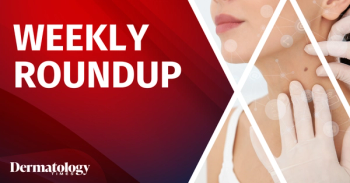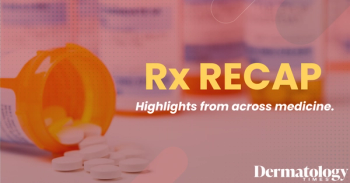
HyBryte Achieves 75% Treatment Success by Week 18 in Ongoing CTCL Trial
Key Takeaways
- Interim data shows 75% of CTCL patients treated with HyBryte achieved significant improvement after 18 weeks, supporting previous phase 3 results.
- The ongoing study mimics real-world conditions, demonstrating HyBryte's long-term benefits and safety in treating CTCL.
Interim FDA-funded study results show HyBryte delivers rapid, sustained response and strong safety in early-stage CTCL patients.
New interim data from an ongoing investigator-initiated study demonstrates the potential of Soligenix, Inc.'s HyBryte (synthetic hypericin), formerly SGX301, as a promising treatment option for early-stage cutaneous T-cell lymphoma (CTCL).1
Rapid Treatment Responses in Real-World Setting
The RW-HPN-MF-01 study (NCT05872854), formally titled, "Assessment of Treatment with Visible Light Activated Synthetic Hypericin Ointment in Mycosis Fungoides Patients," is examining the extended use of HyBryte over a period of up to 54 weeks.2
The open-label, FDA-funded trial is designed to mimic real-world conditions and test the long-term benefits of the therapy beyond the controlled parameters of earlier phase 3 data from such as that of the FLASH (Fluorescent Light Activated Synthetic Hypericin) study.3
Among the first 8 participants who reached the 18-week milestone, 75% achieved what the study defines as "treatment success," marked by at least a 50% improvement in their modified Composite Assessment of Index Lesion Severity (mCAILS) score from baseline.
Of the 8 patients with completed week 18 evaluations, 4 have now finished the full 54-week treatment course, demonstrating an average maximum mCAILS improvement of 85%.
Three other patients remain in treatment, while 1 participant withdrew due to non-medical logistical issues. Across all patients, HyBryte has been well tolerated, with no new safety concerns emerging during extended use.
A Strong Continuation of FLASH Trial Findings
These interim outcomes support results from the earlier FLASH phase 3 trial, in which HyBryte demonstrated both efficacy and a strong safety profile.3 In that pivotal study, 166 patients with stage IA to IIA CTCL received treatment in a 3-cycle regimen. During the initial 8-week, double-blind treatment cycle, 16% of HyBryte-treated patients saw significant lesion reduction compared to just 4% in the placebo group.
The response rate improved with prolonged use in the open-label second cycle. Forty percent of patients treated with HyBryte for 12 weeks achieved a successful outcome.
Furthermore, the FLASH trial also showed that HyBryte was equally effective on both plaque and patch lesions. The third, optional compassionate-use cycle of the study reinforced safety further, with nearly half of patients completing all 3 cycles experiencing significant clinical benefit.
FDA Support and Future Implications
The current study is supported by an FDA Orphan Products Development Grant of up to $2.6 million.4 It is intended to enroll approximately 20 patients across multiple centers in the US. Participants are dosed on a twice weekly basis, and the study design includes a potential transition to at-home treatment to simulate real-world conditions.
Soligenix CEO Christopher J. Schaber, PhD, emphasized that these early findings build further momentum for the therapy.
"We are pleased with these recent study results, giving patients an opportunity to access the therapy in an open-label setting," Schaber said in a news release.1 "CTCL is an incredibly difficult to treat orphan disease and remains an area of unmet medical need with a very limited number of safe and effective therapies. Following the initial phase 3 FLASH study, which demonstrated the safety and efficacy of shorter courses of HyBryte therapy, we are pleased to see that continuing treatment for longer time periods is resulting in the anticipated improved outcomes for patients."
Ellen Kim, MD, director of the Penn Cutaneous Lymphoma Program at the University of Pennsylvania, sponsor of the ongoing study and principle investigator of the ongoing FLASH2 study, echoed that sentiment.
Kim noted that 3 complete responses have already been observed in the current study.
"The complete response rates observed, including three patients achieving a complete response on this study to date, as well as the consistent treatment response and safety profile across multiple HyBryte clinical studies, has been exciting to see," Kim said.1 "With limited treatment options, especially in the early stages of their disease, CTCL patients are often searching for alternative treatments."
Looking Ahead: FLASH2 and Beyond
Meanwhile, enrollment continues in FLASH2, the confirmatory, double-blind phase 3 trial designed to replicate and reinforce HyBryte’s clinical benefit over an 18-week period.5 The FLASH2 trial will include approximately 80 patients and will serve as a key milestone in the potential regulatory pathway for HyBryte.
References
- Positive outcome in 75% of CTCL patients treated with HyBryte for 18 weeks. News release. PR Newswire. April 14, 2025. Accessed April 14, 2025.
https://www.prnewswire.com/news-releases/positive-outcome-in-75-of-ctcl-patients-treated-with-hybryte-for-18-weeks-302426990.html - Treatment of mycosis fungoides with hypericin ointment and visible light (RW-HPN-MF-01). ClinicalTrials.gov ID NCT05872854. Abramson Cancer Center at Penn Medicine. Last updated January 22, 2025. Accessed April 14, 2025.
https://clinicaltrials.gov/ct2/show/NCT05872854 - Kim EJ, Mangold AR, DeSimone JA, et al. Efficacy and safety of topical hypericin photodynamic therapy for early-stage cutaneous T-cell lymphoma (mycosis fungoides): the FLASH phase 3 randomized clinical trial. JAMA Dermatol. 2022;158(9):1031-1039.
doi:10.1001/jamadermatol.2022.2749 - US Food and Drug Administration awards $2.6 million Orphan Products Development Grant for expanded study of HyBryte in the treatment of cutaneous T-cell lymphoma. Soligenix Inc. September 6, 2022. Accessed April 14, 2025.
https://www.prnewswire.com/news-releases/us-food-and-drug-administration-awards-26-million-orphan-products-development-grant-for-expanded-study-of-hybrite-in-the-treatment-of-cutaneous-t-cell-lymphoma-301615684.html - Soligenix initiates confirmatory phase 3 clinical trial of HyBryte for the treatment of cutaneous T-cell lymphoma: FLASH2 study opens patient enrollment. Soligenix Inc. December 16, 2024. Accessed April 14, 2025.
https://www.prnewswire.com/news-releases/soligenix-initiates-confirmatory-phase-3-clinical-trial-of-hybrite-for-the-treatment-of-cutaneous-t-cell-lymphoma-flash2-study-opens-patient-enrollment-301709831.html
Newsletter
Like what you’re reading? Subscribe to Dermatology Times for weekly updates on therapies, innovations, and real-world practice tips.


















